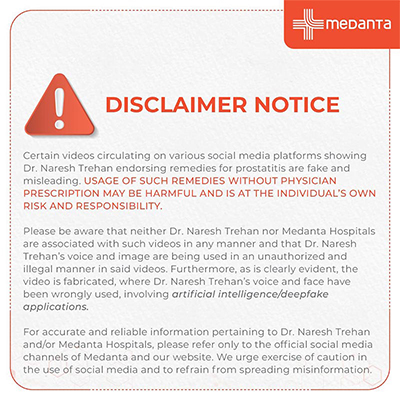How to Recognise the Signs of Burnout
TABLE OF CONTENTS
Recognising the signs of burnout has become vital in today's fast-paced world, where chronic stress affects millions. Burnout symptoms typically manifest across 3 main dimensions: exhaustion, cynicism & feelings of reduced professional ability. These signs can appear both physically and mentally. Importantly, certain professions face higher risks.
Burnout is more than just feeling tired or stressed—it has a specific clinical definition and identifiable causes that distinguish it from everyday work pressure. As put forward by the World Health Organisation (WHO), burnout is recognised as an "occupational phenomenon." It results from chronic workplace stress that has not been successfully managed. Notably, it is not classified as a medical condition but rather as a syndrome affecting workplace performance and well-being.
The experience of burnout involves three primary dimensions:
Feelings of energy depletion or exhaustion
Increased mental distance from one's job, including negativism or cynicism
Reduced professional efficacy or accomplishment
Burnout develops gradually rather than suddenly, making early detection crucial for prevention. Initially, the signs & symptoms may be subtle, with many individuals recognising negative changes in their mental and physical functioning without understanding the connection to their depleting resources of energy and well-being.
The warning signs typically manifest in several distinct ways:
Physical Warning Signs: Physical exhaustion represents one of the earliest and most recognisable symptoms of burnout. This isn't ordinary tiredness—it's a persistent fatigue that doesn't improve with rest. Your body may also signal distress through:
Frequent headaches and tension-related pain
Gastrointestinal problems, including stomachaches and intestinal issues
Weakened immune function, resulting in catching illnesses more frequently
Sleep disturbances, including insomnia or waking up groggy
Changes in appetite and unexplained physical complaints
Emotional and Mental Warning Signs: Above all, emotional changes often precede full-blown burnout. These shifts in your mental state might include:
Growing cynicism and negative attitudes, especially toward work
Feelings of helplessness, self-doubt, and decrease in satisfaction levels
Anxiety about work performance that diminishes when away from work
Detachment from colleagues and feeling isolated
Loss of motivation and enthusiasm
Behavioural Warning Signs: Your actions and behaviours likewise change as burnout progresses:
Reduced performance in everyday tasks and difficulty concentrating
Procrastination and withdrawal from responsibilities
Excessive avoidance of meetings and workplace interactions
Irritability and emotional outbursts over minor issues
Using food, drugs, alcohol or other substances to cope
Research identifies six key domains that contribute significantly to burnout development:
Work overload: Studies show a direct correlation between excessive workload and emotional exhaustion. Due to chronic job conditions and little time to rest and recover, people's capacity to meet demands reduce.
Work environment: A lack of autonomy and inability to influence decisions affecting one's work directly increases the vulnerability to burnout. This lack of control contributes to increased mental distance from work, with research showing a negative correlation between job control and cynicism.
Recognition: Insufficient recognition and reward—whether financial, institutional, or social—increases burnout risk by devaluing both the work and the workers. People need appreciation; and without it, they lose their sense of value to the organisational mission.
Poor workplace relationships and community connections: Burnout becomes more likely when relationships lack support and trust or contain unresolved conflict. Indeed, studies confirm that higher social support, counterintuitively, can sometimes lead to increased burnout when it comes to heightened expectations.
Fairness: Perceived unfair treatment creates toxicity and rapidly erodes trust, leading to disengagement. This includes bias, favouritism, mistreatment, and unfair compensation policies.
Values: Mismatch between personal goals and organisational culture leads to lower job satisfaction and negatively impacts mental health. Workers become disillusioned when organisations fail to stand by their stated values.
Preventing burnout requires a proactive approach rather than waiting until exhaustion takes over. Creating strategies to manage stress effectively can help maintain well-being even during challenging periods.
Setting boundaries is necessary for optimal mental health. This includes defining limits on workload, working hours, and task types. Communicating these boundaries helps create a healthier work environment and cultivates a sense of control. Learning to say "no" when your plate is already full prevents the burdening of responsibilities that often contribute to burnout.
Self-care remains essential for burnout prevention:
Physical well-being: Regular exercise balances stress hormones, with studies showing that even 5,000 steps daily helps keep depression at bay. Maintaining balanced nutrition, staying hydrated, and aiming for 7-9 hours of consistent sleep supports overall wellness.
Mental restoration: Mindfulness practices such as meditation, deep breathing exercises, and journaling can counteract the effects of cortisol (the stress hormone). Taking short breaks throughout the workday and vacations also provides necessary mental recovery.
Social connections: Developing supportive relationships both inside and outside the workplace creates resilience against burnout. Research indicates that maintaining connections with family, friends, and peers promotes a sense of belonging.
Furthermore, seeking professional support through therapy or counselling provides valuable insights of various coping strategies. Therapists can help identify patterns and provide guidance tailored to individual circumstances.
Consequently, acknowledging small achievements becomes important for maintaining motivation. Celebrating small milestones provides tangible evidence of progress, reinforcing a positive mindset and counteracting to feelings of stagnation.
If persistent efforts to alleviate burnout consistently leave you drained, it may be time to evaluate whether your workplace fosters optimal well-being conditions. Sometimes, the most effective prevention strategy involves making significant changes to your work situation or environment.
Seek professional support promptly when:
Coping mechanisms no longer provide relief
Exhaustion persists even after proper rest
Stress manifests as physical symptoms like headaches or muscle tension
Feelings of overwhelm or decreased motivation continue
Social withdrawal occurs both in and outside work settings
Sleep patterns or appetite change significantly
Moreover, immediate professional attention becomes crucial if burnout progresses to more serious mental health concerns. Contact a doctor promptly if experiencing:
Persistent low mood or feelings of hopelessness
Thoughts of harming yourself or others
Signs of clinical depression
Despair or self-hatred
Burnout is a serious condition that affects millions of people across various professions and walks of life. It develops gradually through chronic stress, manifesting in physical exhaustion, emotional detachment, and reduced professional effectiveness. The warning signs appear in our bodies, emotions, and behaviours long before full-blown burnout takes hold.
People experience burnout for several key reasons. Excessive workloads, lack of control, insufficient rewards, poor workplace relationships, unfair treatment, and mismatched values all contribute significantly to burnout development. These factors explain why burnout rates continue to rise across industries.
Though many people try to manage burnout themselves, professional help becomes necessary when symptoms persist despite self-care efforts. Untreated burnout can translate into serious health problems, including anxiety, depression, heart disease, and diabetes.
What's the difference between stress and burnout?
Stress and burnout are related yet distinctly different conditions. Stress typically involves overactive emotions and over-engagement, whereas burnout features emotional numbness and disengagement. With stress, you might feel anxious or have trouble sleeping but remain motivated to tackle challenges. In contrast, burnout involves feeling emotionally drained, detached from your work or life, and developing a sense that your efforts don't matter. Stress represents a short-term response to pressure, while burnout results from chronic, unmanaged stress over time.
How long does burnout recovery take?
Recovery from burnout varies widely depending on several factors, including the situation causing burnout, how severe the condition has become, and how quickly you seek support. For many individuals with short-term stress, recovery happens within a few months. Conversely, severe clinical burnout might require more than a year for full recovery.
Is burnout only work-related?
Although the World Health Organisation officially recognises burnout as an "occupational phenomenon", clinical psychologists acknowledge that burnout can occur in non-work situations as well. The clinical psychology approach focuses more on the consequences of chronic stress rather than its origins, recognising that burnout symptoms can emerge from work stress, personal circumstances, or both.






